Take a virtual ride inside SpaceShipTwo, the Virgin Galactic rocket ship designed to fly passengers on the $250,000 trip of their lives

- Virgin Galactic on Tuesday revealed the flight cabin of SpaceShipTwo, its reusable winged rocket ship.
- The spaceship is designed to launch six passengers past the edge of space, provide a few minutes of weightlessness, and glide them to the ground.
- The company built a virtual-reality experience to show off SpaceShipTwo’s final interior design, including self-reclining seats, scores of port-hole windows, electronic flight path displays, and more.
- Virgin Galactic has yet to say when commercial passengers (including founder Richard Branson) will fly, but the company has nearly completed a list of federal requirements to earn a suborbital launch license.
Virgin Galactic is close enough to launching people into space that it has unveiled the passenger cabin of SpaceShipTwo, offering the clearest image yet of how it will feel to ride into space aboard its signature rocket-powered vehicle.
Richard Branson founded the company in 2004 after the Ansari XPrize proved a reusable piloted rocket ship could launch repeat flights beyond the edge of space — an unofficial boundary about 62 miles (100 kilometers) above Earth. The airline mogul originally hoped to start flying paying passengers with SpaceShipTwo as soon as 2009, but developing the system proved difficult, financially costly, and, on a 2014 experimental flight, even deadly.
But with 16 years of effort behind the now-publicly traded company, including two successful suborbital spaceflights and a new CEO to usher in its next era, Virgin Galactic intends to make good on the $200,000 to $250,000 tickets it has sold to 600 people.
The goal is to launch up to six paying space tourists or scientific researchers per flight from Spaceport America in New Mexico, provide a few minutes of weightlessness, stunning views of Earth from space, and a safe runway landing. To that end, the company is wrapping up a test-flight program to work through a 29-item list of requirements with the Federal Aviation Administration, positioning it to become the first commercially licensed suborbital launch provider.
On Tuesday, Virgin Galactic revealed the inner workings of its spaceships in a live virtual event on YouTube.
Before that event, however, the company sent Business Insider a sneak-peek tour of the spaceship and flight experience inside a box: with a loaned set of Oculus Quest virtual-reality goggles.
Here’s what it’s going to be like inside SpaceShipTwo, according to the VR experience.
Our experience started with a Virgin Galactic-branded “spaceship cabin experience” box for Oculus Quest, a virtual-reality headset released in 2019.

With a few quick adjustments, the headset slipped on and our journey to the edge of space began.
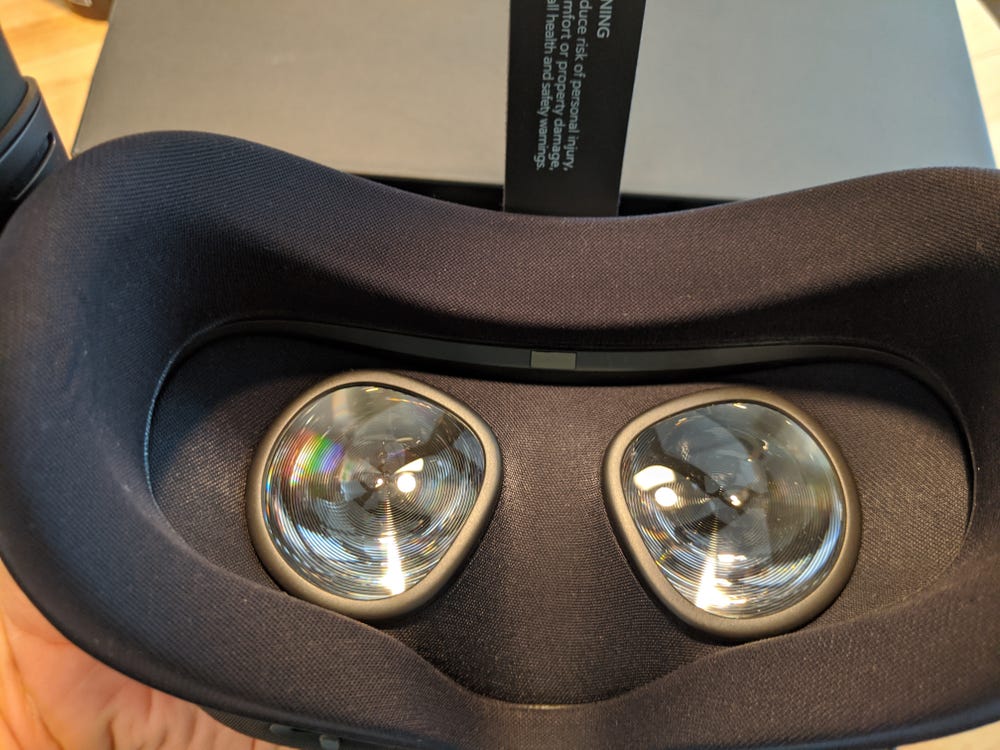
The tour began in a room showing a movie screen and digital model of SpaceShipTwo, VSS Unity (center), and its twin-hull mothership, VMS Eve, on a pedestal.
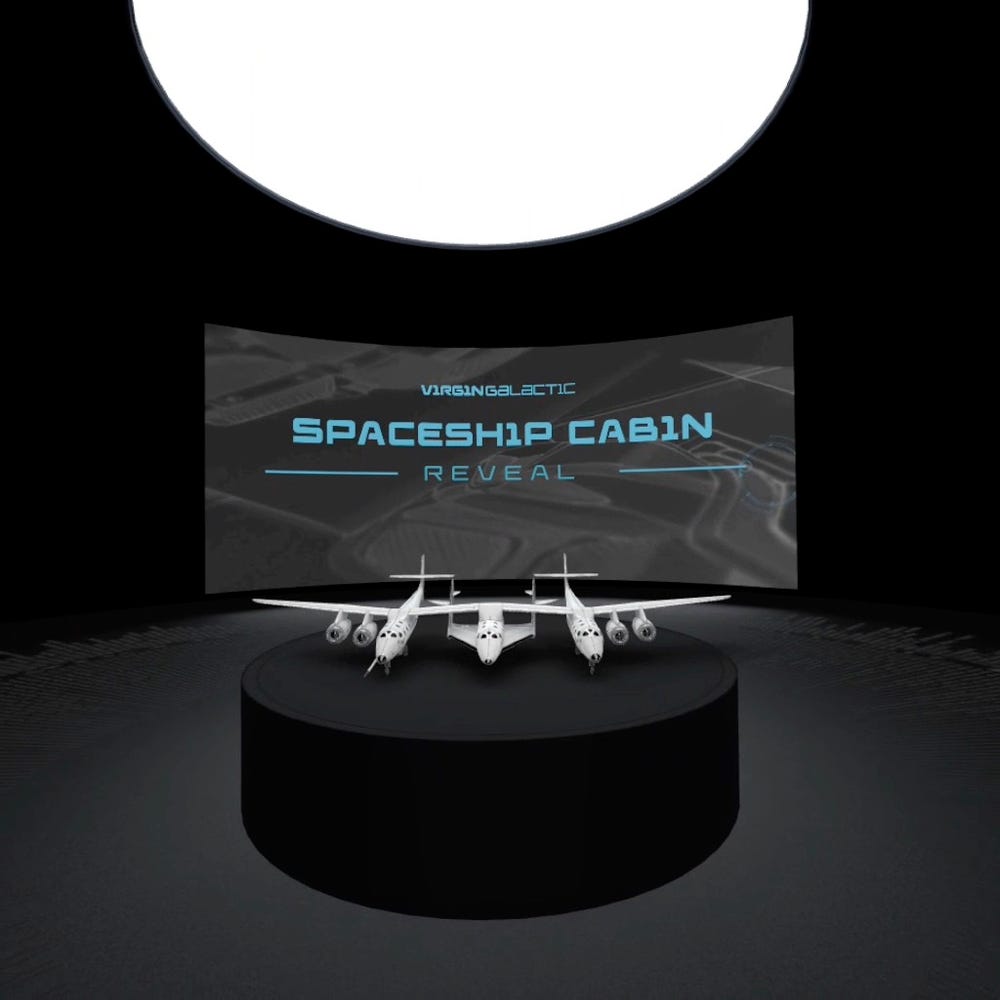
A menu appeared, starting with a runway experience.
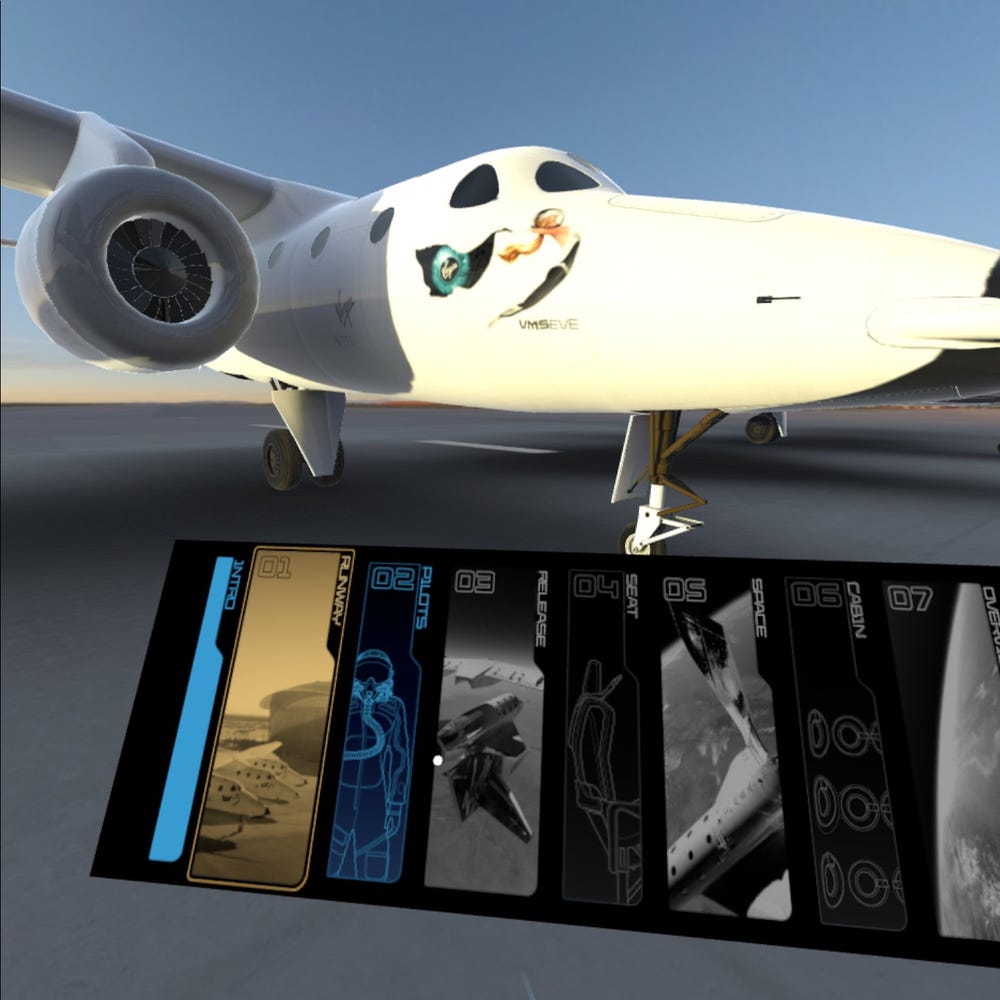
The runway option teleported us to a virtual likeness of the Spaceport America runway in Truth or Consequences, New Mexico. On flight day, passengers will be transported to SpaceShipTwo in Land Rovers.
While we walked up to the rocket ship, pilot radio chatter played in the background.
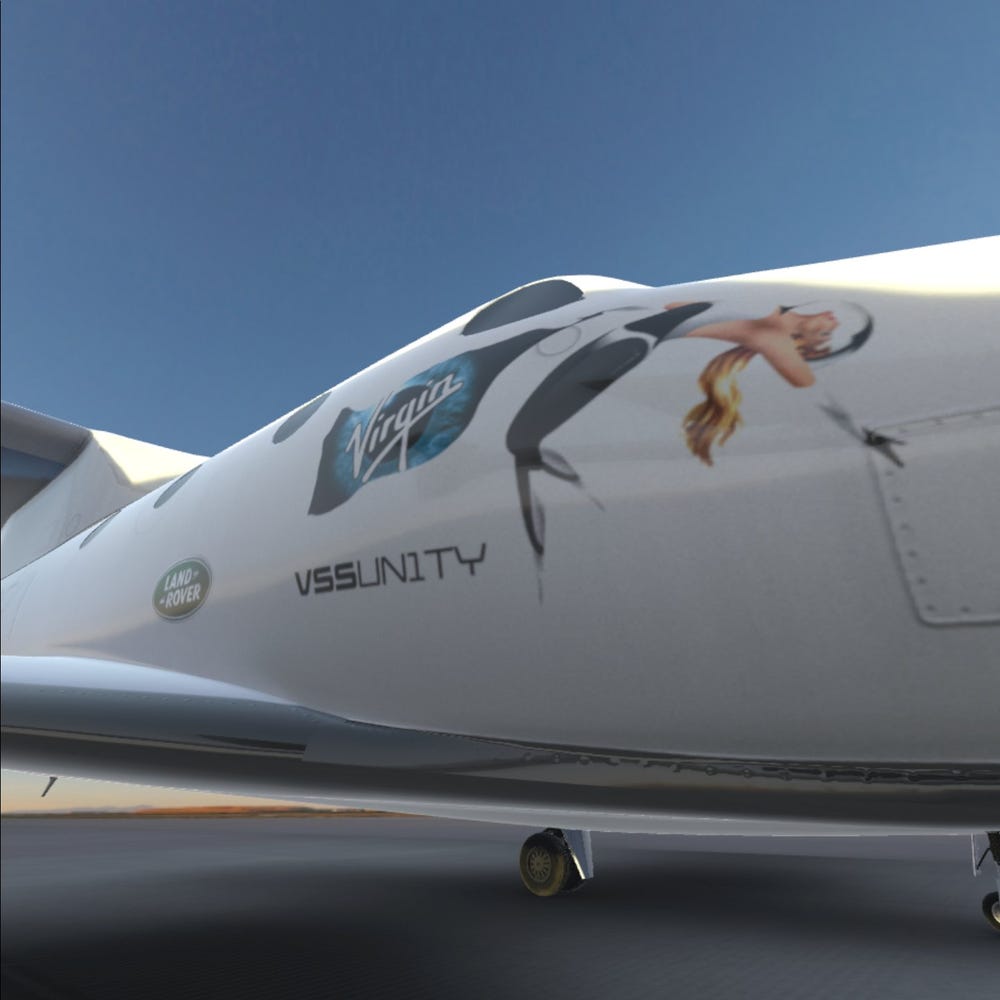
Next we met Virgin Galactic’s six pilots, some of whom have flown thousands of hours in more than 150 different aircraft — and even NASA space shuttles.

The next menu option was where the fun really began, though.
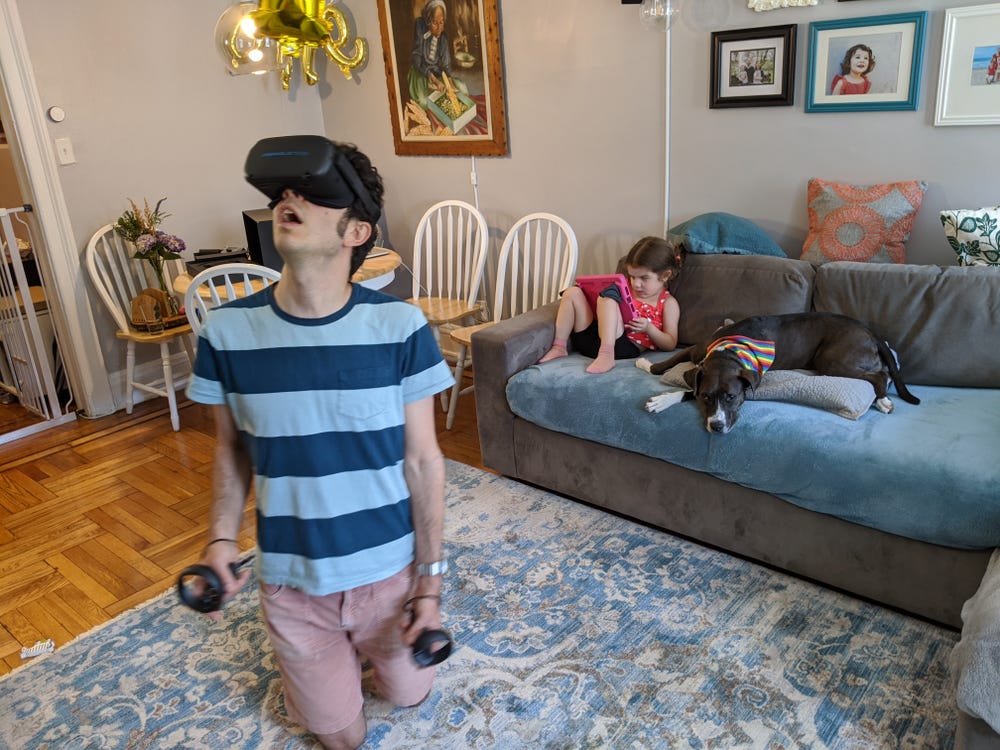
We soon found ourselves sitting inside Unity, looking out on the deserts of New Mexico. The cabin seemed relatively spacious and ready to accommodate views of all sorts with a Swiss-cheese set of 12 porthole passenger windows.
Playing in the background was radio chatter recorded between pilots during a release — the moment when the spaceship detaches from its mothership aircraft — at about 50,000 feet (15 kilometers) above the ground.
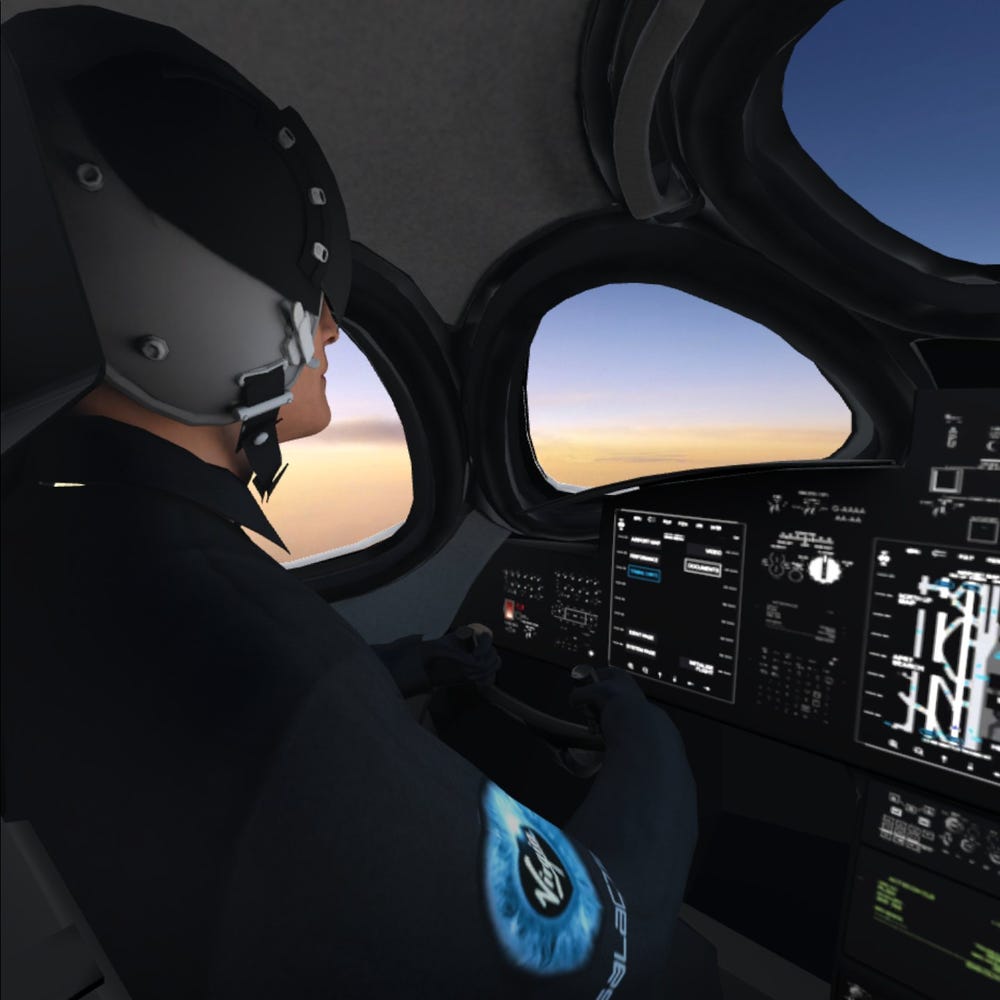
Once the spaceship falls far enough away, pilots ignite a rubber-fueled rocket engine, pitch the craft upward, and (within a few of minutes) propel passengers to more than three times the speed of sound.

Given our virtual license to explore, we visited the cockpit area and greeted the two pilots.
The flight control panel screens give pilots a wealth of information about the vehicle, its location, and the health of its systems.
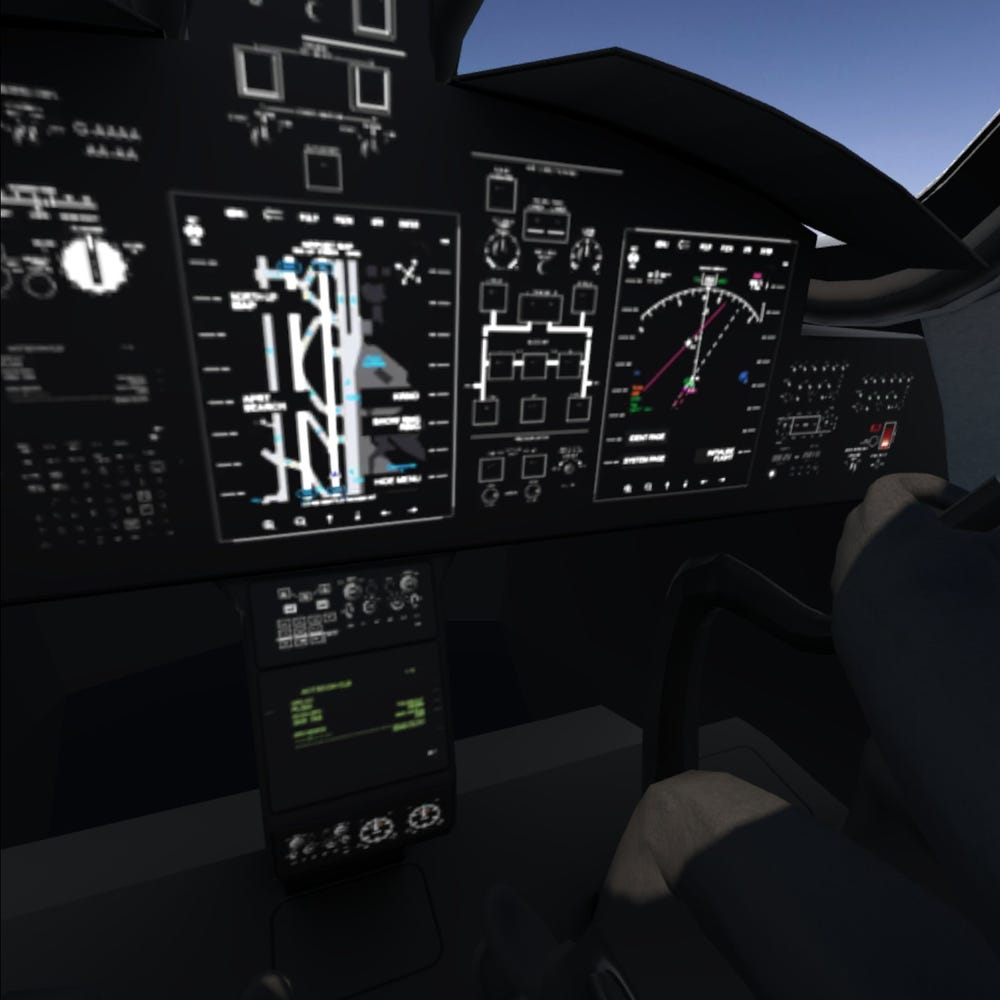
If you were a SpaceShipTwo flight control panel, this is approximately what you’d see.

Essential to every new aircraft or spaceship, apparently, are seat-back screens. Virgin Galactic plans to provide a simple mobile phone-size display with a flight profile tracker and altimeter.
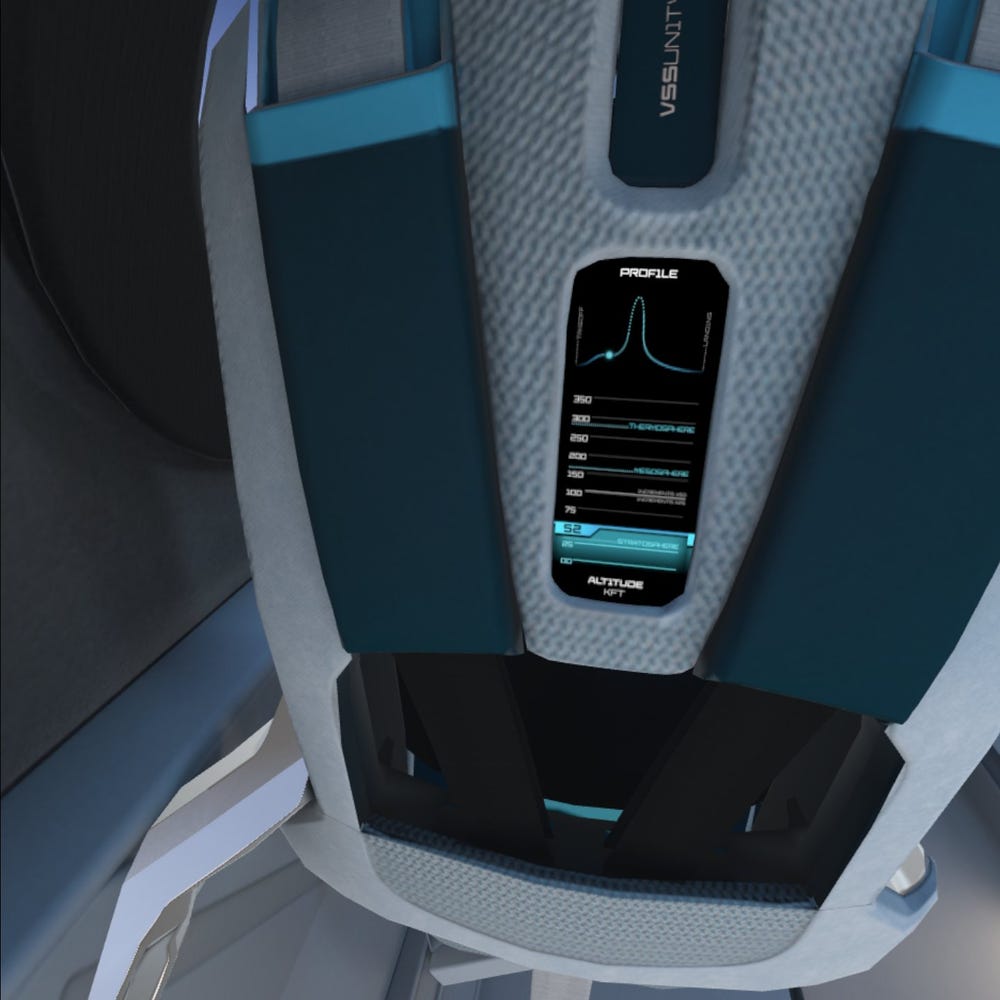
The next menu option gave us a better look at the seat, in particular its auto-recline function as the spaceship finishes its upward rocket-powered boost phase, enters space, and creates a temporarily weightless environment.
The next phase of the tour took us above the Karman Line, the unofficial boundary of space.
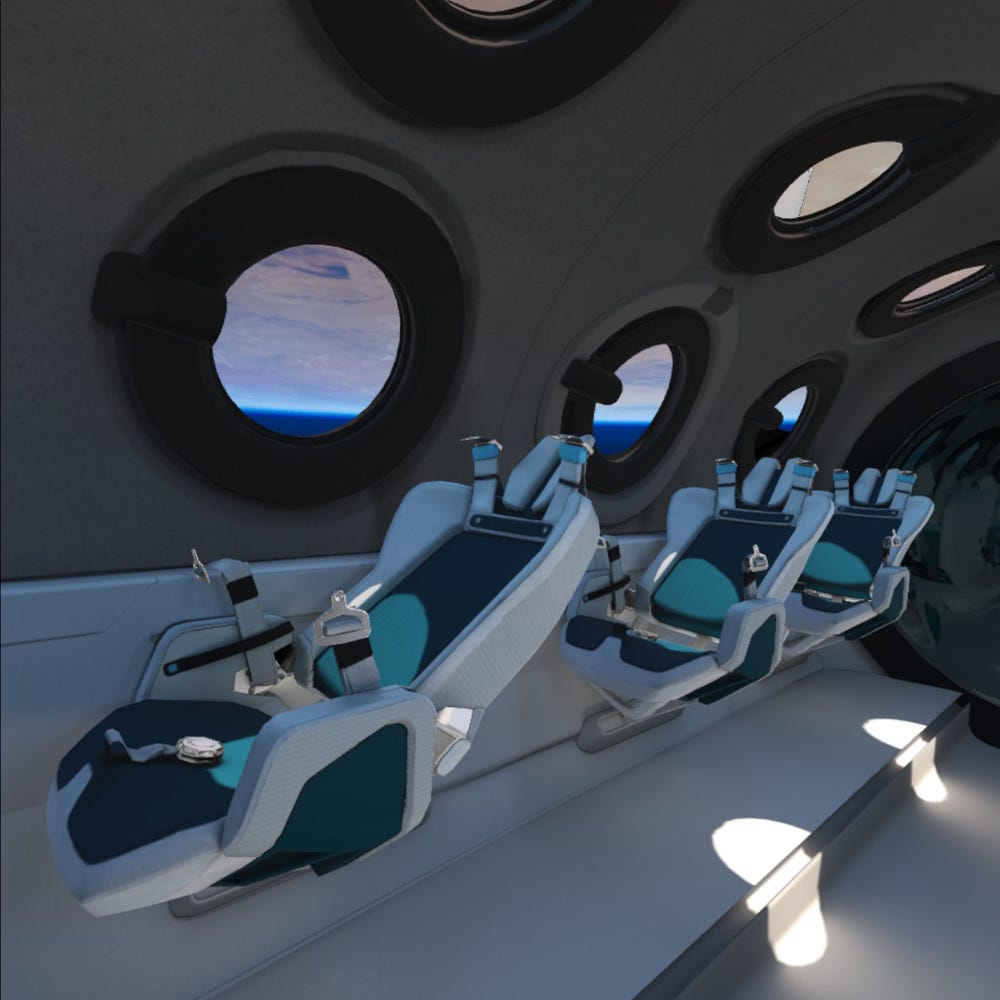
Before SpaceShipTwo reaches this moment, the pilots move, or “feather”, its wings to invert the vehicle. That way, when you look up, you’re actually looking down at Earth’s mesmerizingly distant surface.
It’s not hard to imagine yourself floating around the cabin, amped up by the rush of rocketing to space, and taking in the sights of the planet and its thin atmospheric shell through the windows.
If you put your face right up to a window, you’d likely take in a scene like this. Virgin Galactic lined the inside with foam for comfort and says you won’t need to worry about recording anything — the cabin is lined with 16 cameras.

As is customary for a company run by Richard Branson, no detail about the customer experience seems to be overlooked. Even the porthole windows will have mood lighting that changes with the phase of flight.
Virgin Galactic has yet to announce when it plans to fly passengers, including Branson himself, but the company is in a near-final phase with its efforts to secure a license from the FAA.

The company can also remove seats to add scientific payloads, such as microgravity experiments that can’t be performed on Earth.

For our sake, we hope Virgin Galactic is making room for a journalist or two to convey what it’s actually like to ride a rocket, become an astronaut, and take in a view only a few hundred humans have ever seen.
